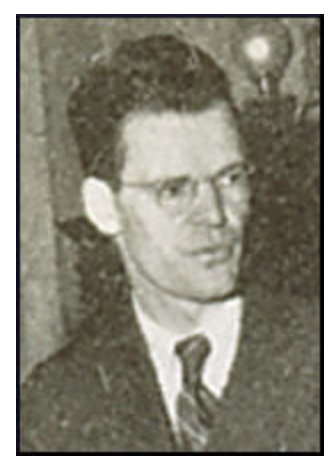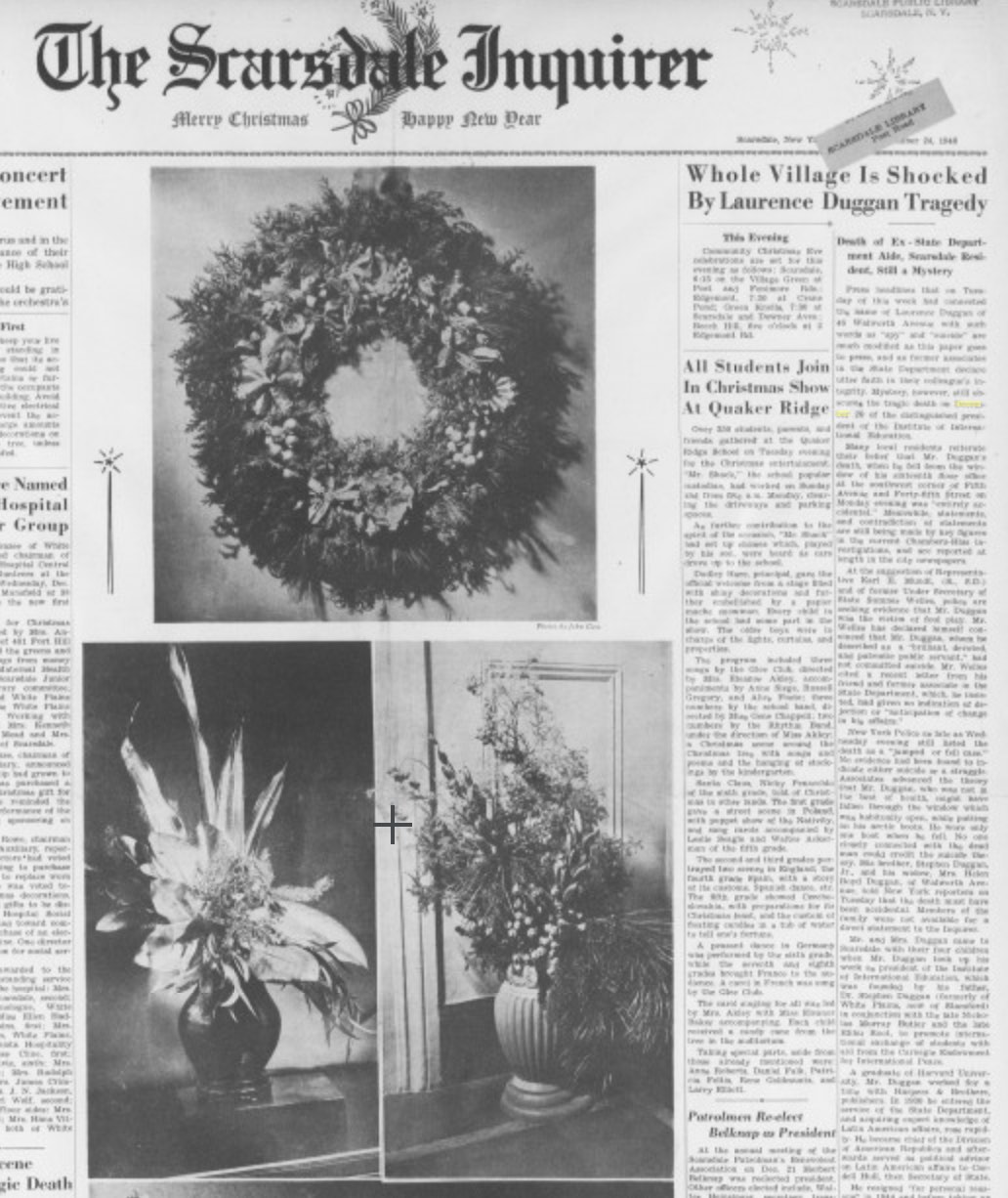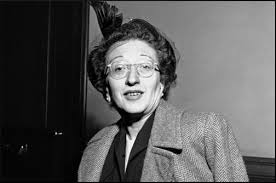When Scarsdale Became a Cold War Dateline
- Category: On Our Radar
- Published: Tuesday, 12 November 2019 21:40
- Brian T. Brown
 Larry DugganSome fifty years ago, just a few days before Christmas, Westchester newspapers supplied a jarring and darker contrast to the holiday spirit. Readers were being informed that the Cold War had arrived on their doorsteps.
Larry DugganSome fifty years ago, just a few days before Christmas, Westchester newspapers supplied a jarring and darker contrast to the holiday spirit. Readers were being informed that the Cold War had arrived on their doorsteps.
On December 20, 1948, Scarsdale resident and ex-State Department aide Larry Duggan had died shockingly and mysteriously in New York City. Police on the scene were uncertain if Duggan had either accidentally fallen or jumped from the sixteenth floor of his office, at Fifth Avenue and Forty-fifth Street. He was just 43 years old and had left behind a wife and four children.
Responding to reports that Duggan was an outed Soviet spy who had chosen suicide, former Under Secretary of State Sumner Welles was quoted describing his former close colleague as “a brilliant, devoted, and patriotic public servant” and, citing a recent personal letter from the deceased, said there was no indication of “dejection” or “anticipation of change in affairs.”
After the conclusion of the Cold War, and the steady release of formerly classified information, we would learn that people such as Sumner Welles had badly misjudged Larry Duggan. The Scarsdale resident was not exactly a patriot and, in the days leading up to his death, this often fraught husband and father of four was under an immense amount of stress. Larry Duggan was, in fact, a longtime Soviet asset who, for several reasons, may indeed have reached a point of despair.
In late 2016, while working from an address just a few blocks from Duggan’s Scarsdale home (46 Walworth Avenue), I began research on a book about Cold  Duggan's death made headlines on December 24, 1948War paranoia. It was published November 5 by Twelve, with the title: Someone Is Out to Get Us. In the course of inhaling background on the period, I would learn to be suspicious about information published during the Cold War. Like many other authors who’ve attempted a second draft of the period’s history, I’d learn there’s a seemingly bottomless pit of buried truths.
Duggan's death made headlines on December 24, 1948War paranoia. It was published November 5 by Twelve, with the title: Someone Is Out to Get Us. In the course of inhaling background on the period, I would learn to be suspicious about information published during the Cold War. Like many other authors who’ve attempted a second draft of the period’s history, I’d learn there’s a seemingly bottomless pit of buried truths.
As I was reading about the death of purported spy Larry Duggan, for example, I also had to keep in mind the residue of disinformation created by manipulative masters of propaganda, such as J. Edgar Hoover and Joe McCarthy, who were both hyping a Red Scare into hysteria, and then exploiting it, for their own fame and power. In the late Forties and throughout much of the Fifties, thousands of Americans were falsely accused of being communists and, as a result, had had their lives destroyed.
But, in finding unearthed intelligence files, I also learned that Duggan was one of a group of young intellectuals who had fallen in love with an idealized version of the Soviet Union and, when he realized his folly, discovered that there was no such thing as an exit clause from the Kremlin’s spy shop.
Duggan was recruited by the NKVD – the forerunner of the KGB. His establishment credentials were one of his chief virtues. His resume seemed to make him an unlikely Stalin acolyte. His father, Stephen, was a Columbia-educated scholar who, along with Nobel laureate and Columbia President Nicholas Murray Butler, had founded the International Institute of International Education, a global student exchange program sponsored by the Carnegie Endowment for International Peace. Larry had received his early education in Hartsdale and White Plains, then went on to graduate with honors from two of the educational pillars of the WASP elite: Phillips Exeter Academy and Harvard.
But, as Larry Duggan joined the U.S. State Department in 1930, capitalism seemed on the verge of collapse after a wave of bank failures and sudden mass unemployment. Socialism, if not communism, seemed like the increasingly sensible alternative. As Arthur Miller wrote: “The story went around that Wall Street stockbrokers were calling Earl Browder, head of the Communist Party, for his analysis of the economy … It was capitalism that was irrational, religious, obscure in the head, and Hitler was its screaming archangel.”
Duggan would be enticed into espionage by a Viennese actress turned Soviet agent named Hede Massing. “Every decent liberal,” she told the young American, “has a duty to participate in the fight against Adolf Hitler.” Eventually, Duggan began regularly passing State Department documents to Soviet agents.
As Kati Marton wrote in True Believer, Duggan was part of a “startling tale … of the faith highly intelligent, superbly educated young Americans placed in a country they had never even visited and on whose behalf they willingly betrayed their own.”
But Duggan was soon having second thoughts. He couldn’t ignore Stalin’s ongoing show trials, which the dictator was using to purge virtually all of his potential political and military rivals.  Duggan was enticed into espionage by Viennese actress turned Soviet agent named Hede Massing.The scale and speed of the killing in Russia had been horrific. For example, the officer corps of the Red Army all but disappeared in the fall of 1938, as 13 out of the 15 top commanders and 154 out of 195 division commanders were shot on the basis of false accusations. In total, approximately 800,000 would be executed. Another 1.7 million would die in labor camps.
Duggan was enticed into espionage by Viennese actress turned Soviet agent named Hede Massing.The scale and speed of the killing in Russia had been horrific. For example, the officer corps of the Red Army all but disappeared in the fall of 1938, as 13 out of the 15 top commanders and 154 out of 195 division commanders were shot on the basis of false accusations. In total, approximately 800,000 would be executed. Another 1.7 million would die in labor camps.
After Duggan expressed doubts that there couldn’t possibly be that many traitors inside the USSR and, moreover, that he wanted to cease contact with the NKVD, he was summoned by his Soviet handler for what became a six-hour sit down. The ambivalent American was told that the “extermination of these traitors only strengthens the nation and its army immeasurably.” As for his wish to bolt, it was made clear to him that the Kremlin wasn’t ready to release him from his duties.
In 1944, Secretary of State Cordell Hull reportedly insisted Duggan resign because of suspicions about his disloyalty. Once out of government, Duggan assumed he’d finally be of no use to Moscow. But, after succeeding his father as director of the International Institute of Education and settling in Scarsdale, he inadvertently found a way to remind the Kremlin about his existence.
In a 1947 issue of America magazine, Duggan supported funding for Soviet exchange students. Seeing the possibility of using such a program as a cover for intelligence operatives, a Soviet official codenamed “Shaushkin” – real name Sergei Romanovich Striganov – visited Duggan at the IIE’s Fifth Avenue office on July 1, 1948.
“He received me kindly,” Striganov reported back to Moscow, “was attentive, told [me] in detail about the work of the Institute, showed its premises,” and then “gave me to understand that it was time to leave, and took me to the elevator … He had no wish to talk about anything other than the Institute and tried the whole time to keep an official tone. I got the impression he was constantly on his guard.”
By 1948, the Cold War was in high gear. Behind an Iron Curtain, Soviet communism had been brutally imposed on the entirety of Eastern Europe – not one country had freely elected a communist regime. Moreover, the Czech foreign minister had recently been thrown out of the window of his apartment in Prague.
At the same time, millions in Europe were starving. Secretary of State George Marshall had beseeched Stalin to participate in an American plan to send billions of dollars of food and supplies to the continent. Stalin shrugged and, further, refused to allow Czechoslovakia, Poland and Romania to join what became the Marshall Plan.
On June 24, 1948, Harry Truman answered Stalin’s blockade of West Berlin with a blazingly audacious airlift. Thousands of military supply flights began keeping the city’s two-million imprisoned citizens fueled and fed.
Two months later, Whittaker Chambers told a New York grand jury that Alger Hiss was a Soviet spy, although this was hardly the first time that Chambers had made the charge. In 1939, also horrified by Stalin’s homicidal purges, Chambers had visited a contact in the State Department, Adolf Berle, and confessed that he had been a member of a secret Soviet cell in Washington that included Hiss, who, like Duggan, was a Harvard-educated, high-level State Department official with access to very sensitive communications. In 1940, Berle informed the FBI of the Chambers allegations and ⎼ after no response ⎼ did so again in 1941. The FBI interviewed Chambers in 1942 and 1945. He wasn’t taken seriously.
While the FBI failed to act on the Chambers information, Soviet espionage agents continued to conspire with British and American operatives to infiltrate the U.S. government and, before the end World War II, had pretty much stolen the plans for making an atomic bomb. The FBI’s pathetic counterintelligence capability was among the reasons the Cold War got so hot so fast. In the back half of the 1940s, as news of Soviet spying successes flooded into the headlines almost all at once, it came to seem like Stalin’s spies could be anyone, show up anywhere, ready to strike anytime.
For Duggan, bad news began to arrive with a blazing fury. On December 8, 1948, in secret testimony before the House Un-American Activities Committee, anti-communist journalist Isaac Don Levine said Chambers had told him that Duggan had passed documents to the Soviets. At the same time, NKVD recruiter Hede Massing identified Duggan as a Soviet asset.
Later, Massing wrote, "Of the conquests I made while a Soviet agent, the one I regret most is Larry Duggan ... Larry impressed me as being an extremely tense, high-strung, intellectual young man ... His wife, Helen, beautiful, well balanced, capable and sure of herself, seemed the perfect counterpart to him. An excellent housekeeper and busy woman, she was an attentive and loving companion to Larry."
On December 11, 1948, FBI agents interviewed Duggan in his Scarsdale home. On December 15, the Soviets were trying to reach him again. His most recent Kremlin visitor, Sergei Romanovich Striganov, had called the IIE office and left a message with the secretary. Five days later, at around 7 p.m., Duggan would be discovered barely alive, on top of a pile of snow near the entrance of his office building, on the southwest corner of Fifth Avenue and Forty-Fifth Street. Taken to Roosevelt Hospital with fractures and internal injuries, he was pronounced dead on arrival.
Time reported: "In the raw, early darkness of a Christmas-week evening, Manhattan's slushy 45th Street rustled with the shuffling sound and movement of people. Fifth Avenue's traffic brayed and rumbled close by … No one saw him start his long, tumbling drop to the street. He fell on a heap of dirty snow. Passersby stopped, turned, and saw him then; a thin, black-haired man lying broken and dying."
Another news report revealed that associates of Mr. Duggan’s were speculating that he “might have fallen through the window, which was habitually open, while putting on his arctic boots. He wore only one boot when he fell.” The article also indicated that Duggan’s brother and wife had told New York reporters that the death “must have been accidental.” Helen Duggan had added angrily, “I deny that my husband had anything to do with Whittaker Chambers or... with spying. It's the biggest lot of hooey I ever heard. It just isn't so – any part of it."
Around the same time as her husband’s death, Westchester residents were being given another reminder of the immediate consequences of the Cold War. The Psychological Barometer, a nationwide coast-to-coast poll, was reporting that 67 percent of those questioned said Communism was dangerous, while only 26 percent feared Socialism.

Brian Brown is the author of “Someone Is Out To Get Us: A Not So Brief History of Cold Paranoia and Madness” For more, go to: somoeneisouttogetus.com.







